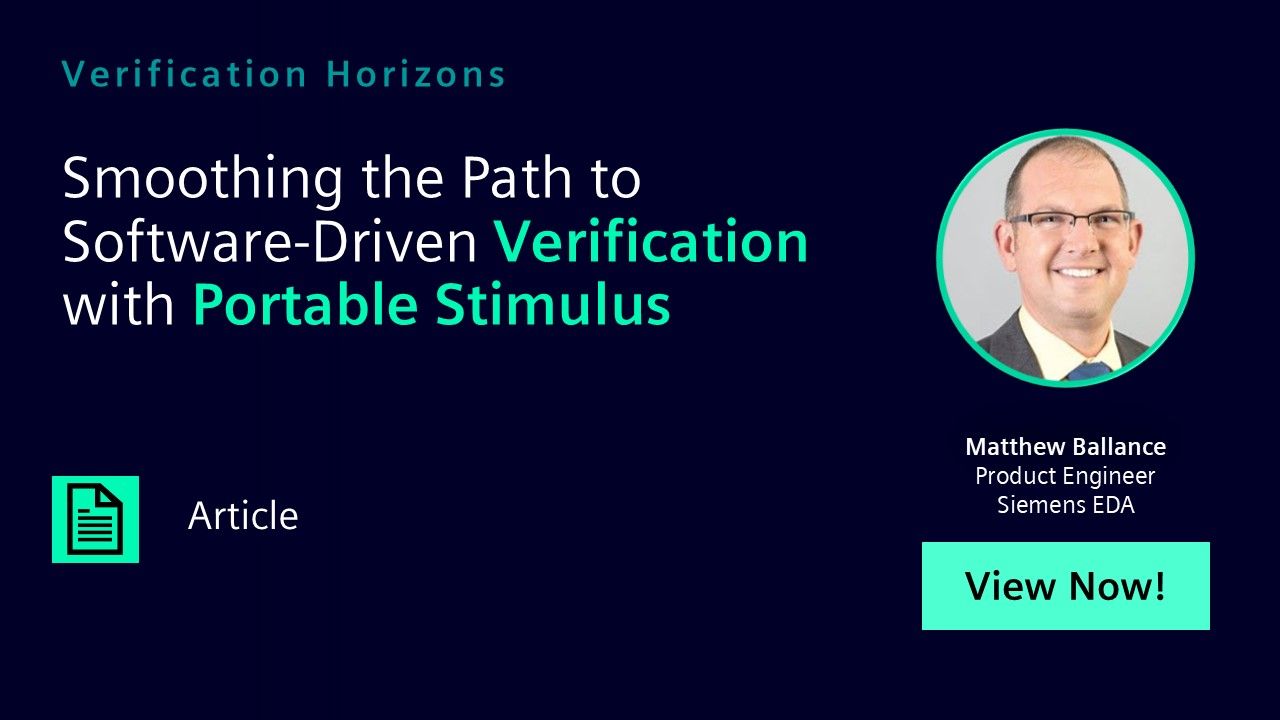Smoothing the Path to Software-Driven Verification with Portable Stimulus
Designs are becoming more complex and increasingly include a processor – and often multiple processors. Because the processor is an integral part of the design, it's important to verify the interactions between software running on the processor and the rest of the design.

Full-access members only
Register your account to view Smoothing the Path to Software-Driven Verification with Portable Stimulus
Full-access members gain access to our free tools and training, including our full library of articles, recorded sessions, seminars, papers, learning tracks, in-depth verification cookbooks, and more.